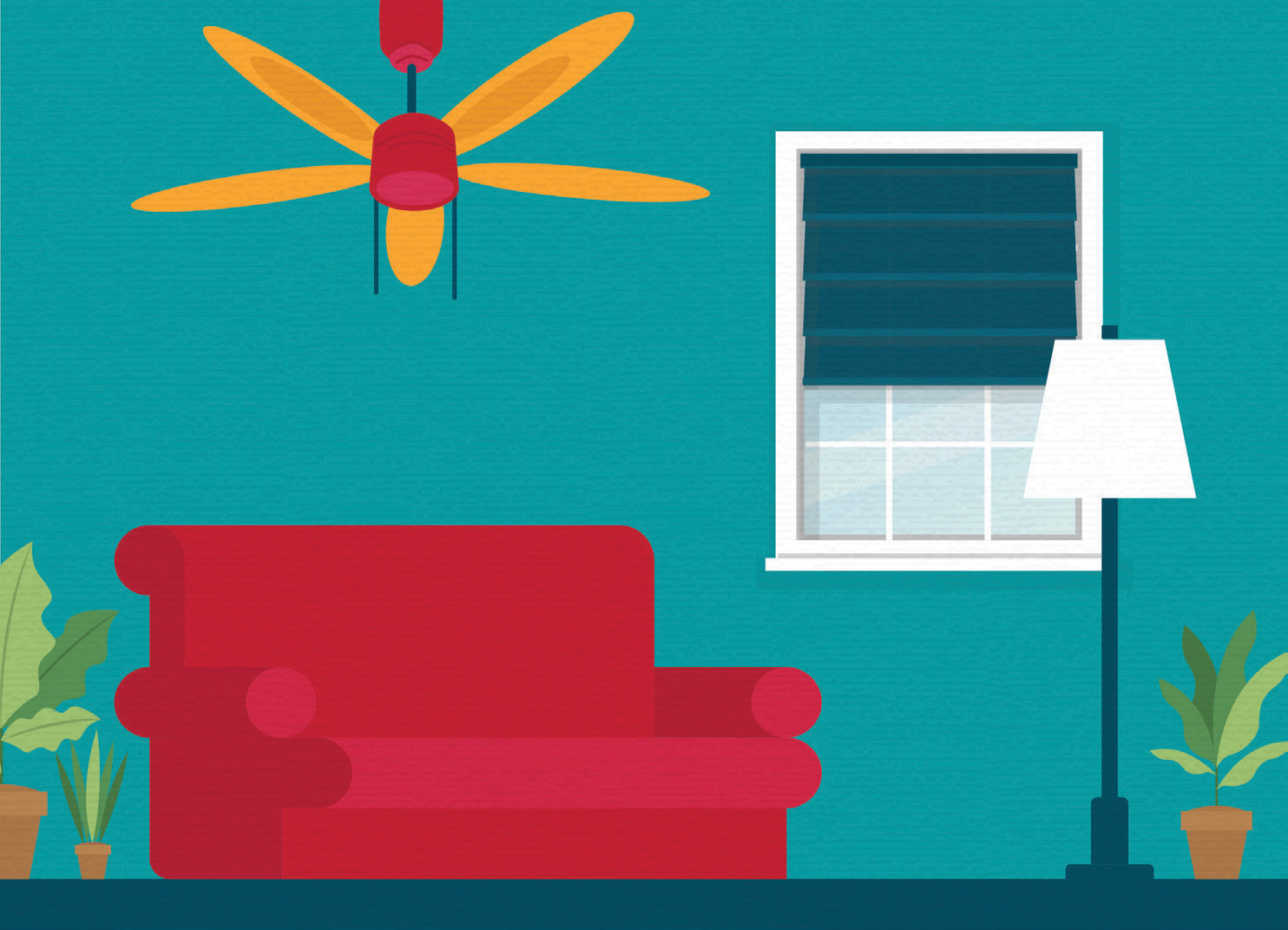
Did you know that a ceiling fan could allow you to raise the thermostat setting without affecting your comfort? Fans create a wind-chill effect on your skin to make you feel cooler. Raising the temperature and using a fan can help you use less energy running your air conditioner. You may even be able to avoid using your air conditioner altogether.
FOLLOW THESE TIPS WHEN INSTALLING AND USING A CEILING FAN:
- Purchase a ceiling fan that has earned the ENERGY STAR® to ensure your unit runs efficiently. You can find and research Energy Star ceiling fans at Energystar.gov.
- Try to install a ceiling fan in every room that needs cooling when the weather is hot, but ensure that the ceiling is at least 8 feet high. Fans work best when the blades are 7–9 feet from the floor and 10–12 inches below the ceiling.
- Choose a fan that is the appropriate size for the room. Larger ceiling fans can move more air than smaller fans. A 36- or 44-inch diameter fan will cool rooms up to 225 square feet, while fans that are 52 inches or more should be used in larger rooms. Multiple fans work best in rooms longer than 18 feet. Small-and medium-sized fans will provide efficient cooling in a 4- to 6-foot diameter area, while larger fans are effective up to 10 feet.
- A larger blade will also provide comparable cooling at a lower velocity than a smaller blade. This may be important in areas where loose papers or other objects will be disturbed by a strong breeze. The fan should also be fitted to the aesthetics of the room — a large fan may appear overpowering in a small room.
- Follow the manufacturer’s instructions when installing your ceiling fan.
- Fans cool people, not rooms. Only operate ceiling fans when you are in the room; turn them off when you leave.
If you can’t install a ceiling fan, a small portable fan will create the same wind-chill effect and might be an inexpensive option. Learn more about ceiling fans at energy.gov/energysaver.



